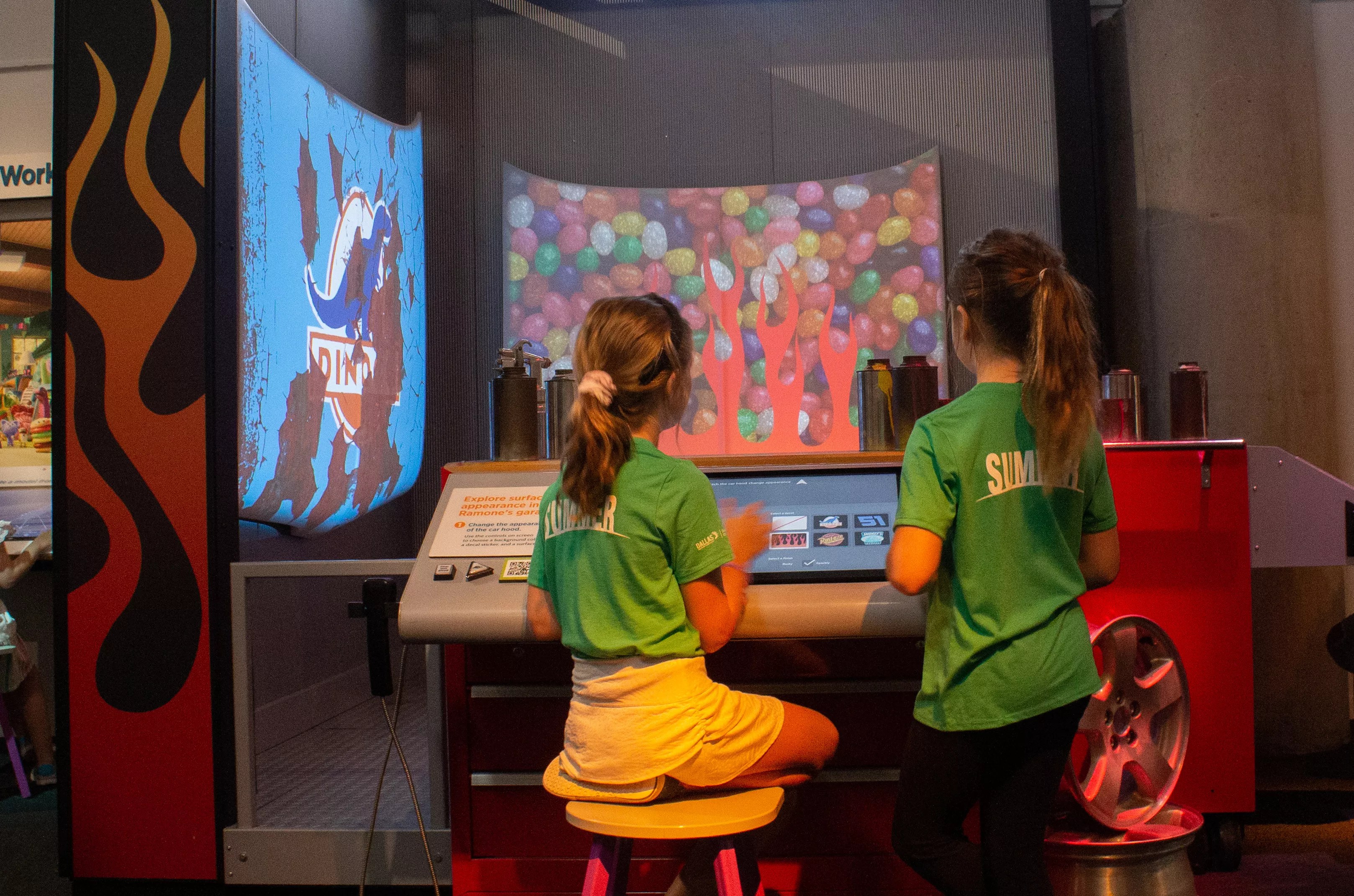
Jordan Maddox

Audio By Carbonatix
If you’re gonna have Pixar and an iPad babysit your kids (no judgment; your kids wear us out too), you can also help them understand what they’re watching. You still have a few months to catch The Perot Museum’s The Science Behind Pixar exhibition, which opened in November and runs until Sept. 4. It will give them so much knowledge, you’ll be able to show them Wall-E on a loop without guilt.
If you were a child when Toy Story came out, you’ll remember that moment as a significant before and after in filmmaking.
Kids today will never know the privilege of going to the movie theater pretty much only once a year to see the newest hand-drawn animation, usually by Disney, such as The Little Mermaid and Aladdin. Then, one day without warning, we were smacked upside down by the far more realistic, almost photographic (we were really wowed back then) 3D animation in Toy Story at the time of Pixar’s debut.
It was a true game changer. Beyond their sharp image and high gloss, Pixar films were lively, scored by the clanky piano of the jolly Randy Newman and told through a blindingly bright color palette. Despite the story settings, plots were more relatable. Characters got lost at Pizza Planet and were jealous of their friends. It wasn’t Shakespearean tragedy as told through animated lions, relatives trying to steal each other’s hearts or a cute new colonizer boy in town trying to commit genocide on your land.
This year, make your gift count –
Invest in local news that matters.
Our work is funded by readers like you who make voluntary gifts because they value our work and want to see it continue. Make a contribution today to help us reach our $30,000 goal!
It was like going from silent films to the talkies, or from black and white to color, as if toys truly had come to life.
The new medium brought on endless new possibilities and built the creative blocks for a vast Pixar universe which, in terms of innovation and achievement, contained whole Aztec empires within it.
Beyond the characters and popping one-liners (“you uncultured swine” – what a great daily catch-all) that unleashed our imagination into the infinity and beyond, the first of Pixar’s creations also had a “Making of” featurette at the end of the VHS that revealed the magician’s secrets: how the movement of the toy soldiers came from animators nailing their shoes onto slats to emulate their motions, and how they studied the toy’s perspective from floor level, adding smudges to the room’s baseboards for authenticity.
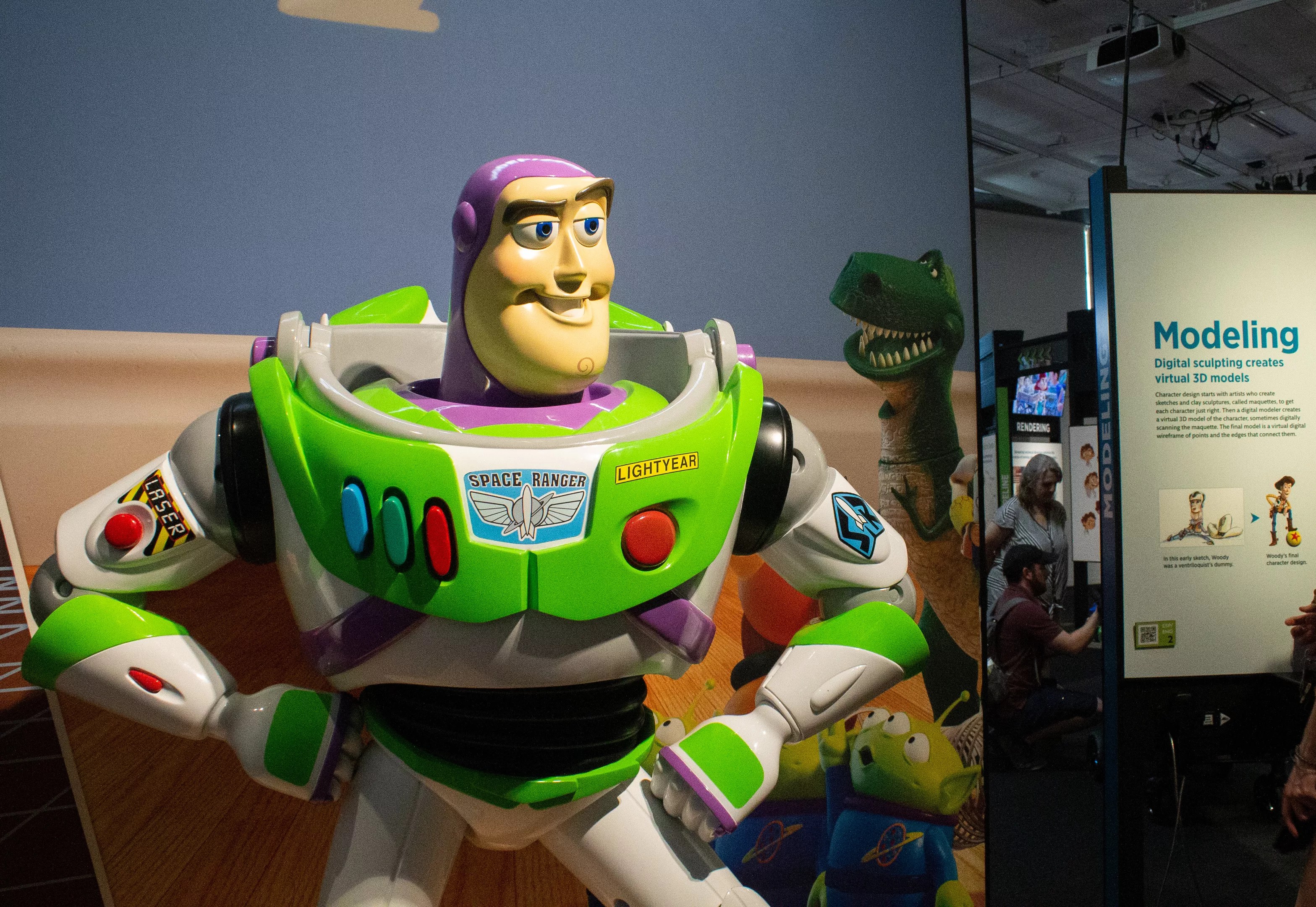
Remember when Andy lost his Buzz? That’s us every Friday.
Jordan Maddox
But there’s so much more to Pixar’s innovations that made other films possible, even outside of the company. The Science Behind Pixar is widely comprehensive, detailing the filmmaking process from scratch and through its last bit of polishing on animated classics such as Monsters Inc. and Ratatouille.
While examining the science behind the animations, the exhibition is an excellent opportunity to revisit the films and their stories. Pixar taught children about loss in Up, and gave us a feminist heroine through Scottish lore in Brave, with a princess whose real love is her mother and not some schmuck prince. One aspect of Merida’s individuality is her massive cascade of flowing red curls. The creation of her hair required the production of new technology, and that’s also to be celebrated.
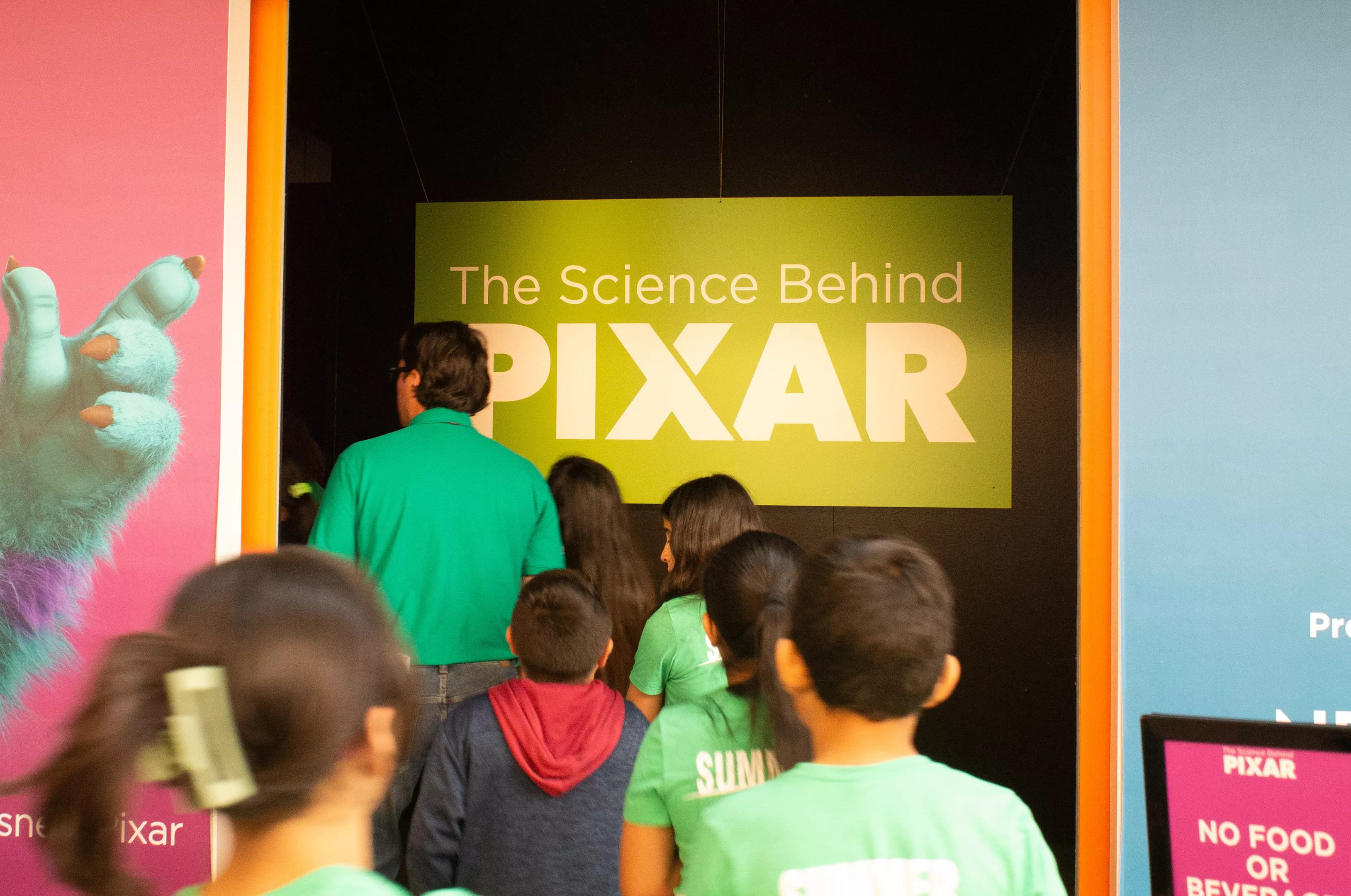
The Science Behind Pixar exhibition takes a good two hours to go through, if you want to try every feature.
Jordan Maddox
What’s incredible about the exhibition is that it’s almost entirely interactive, with stations where visitors can make their own creations while learning the spatial elements of design. This works well for museum visitors who tend to be bored after seeing the first few works of art, for tactile learners who can’t not touch the art, antsy children and technology nerds. (Though if you feel overstimulated by all the playing with knobs, there are also plenty of opportunities to sit back and watch videos of Pixar animators describing their work.)
That said, the exhibition should be sponsored by Purell. With so many little hands touching everything, it’s not for germaphobes.
It’s worth the potential for a few sniffles, though: One large installation shows the step-by-step making of its films, from rudimentary storyboards to the molding of characters, and the complexities of set design techniques. Each section shows how animators are able to achieve the convincing appearance of texture and lighting, shading and other details we’ve shamefully hardly ever bothered to notice.
Beyond a flowering STEM experience, we get a look back at our favorite childhood characters with a renewed perspective and The Science Behind Pixar gives us something that never hurts: true appreciation for other people, or at least their insanely innovative work.
The Science Behind Pixar at the Perot Museum of Nature and Science, 2201 N. Field St., runs through Sept. 4.
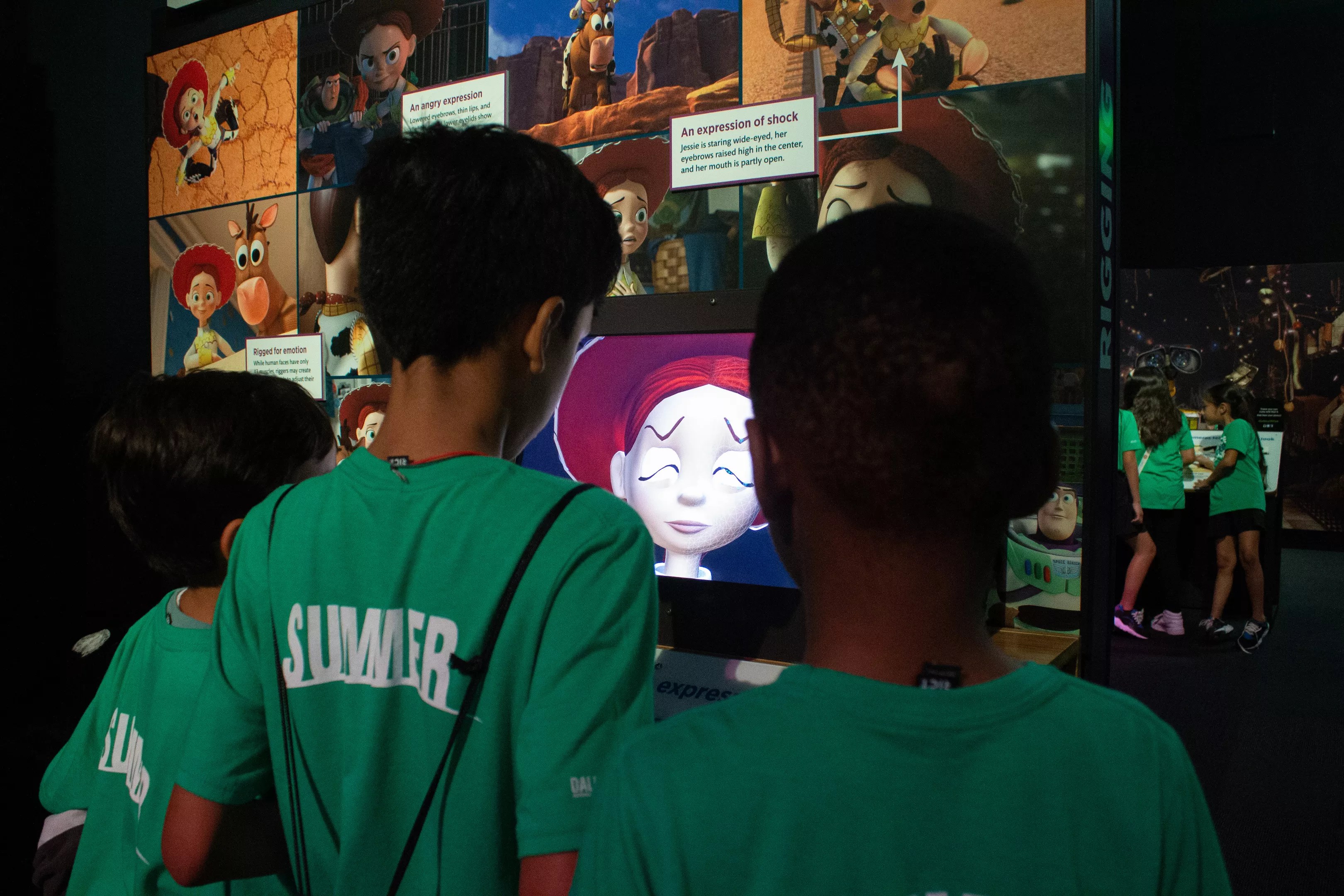
The exhibition examines character’s facial gestures.
Jordan Maddox
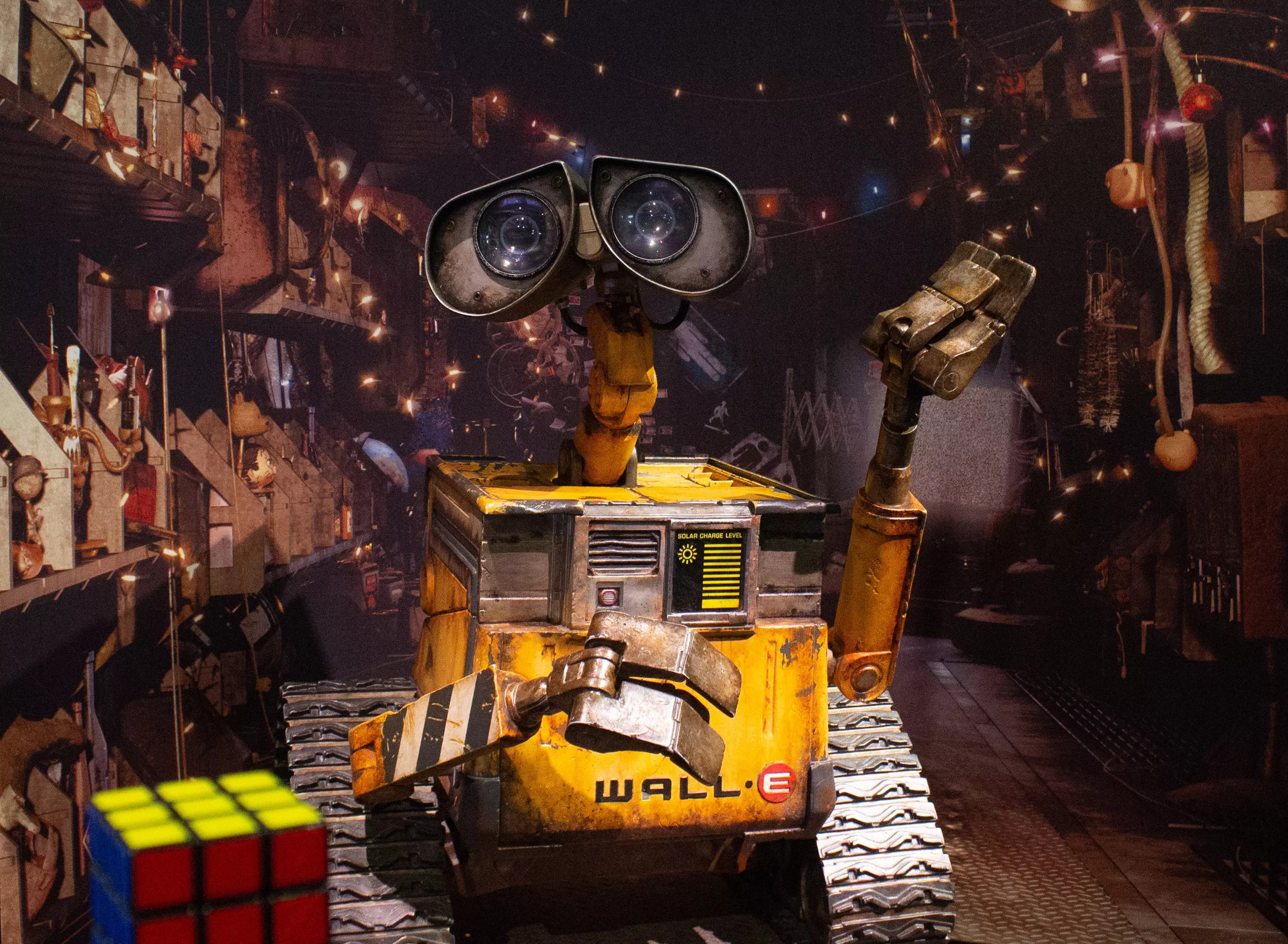
The Wall-E robot looks more human than Mark Zuckerberg thanks to the geniuses at Pixar.
Jordan Maddox